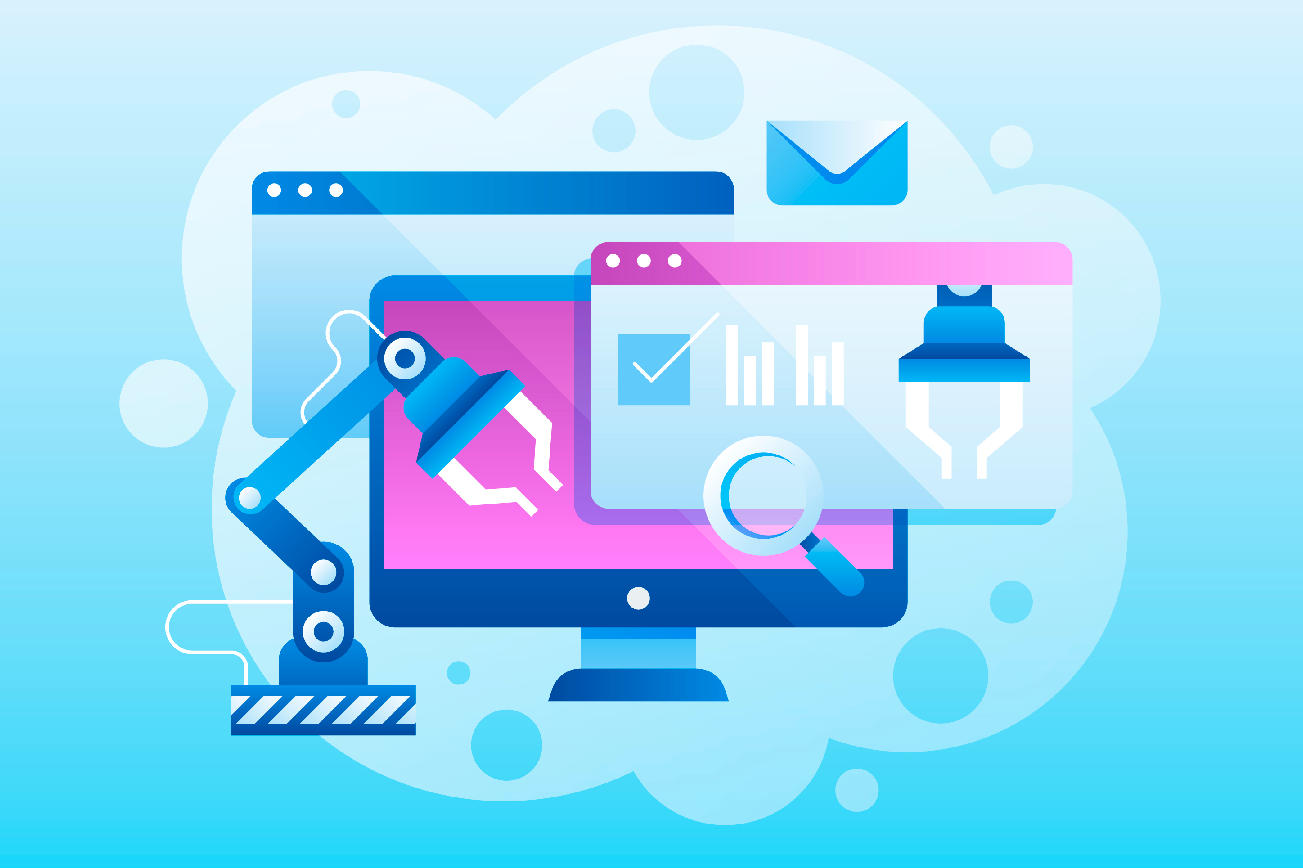By
AgilePoint
November 6, 2025
•
8
min read

Every organization runs on a mix of tasks that repeat daily. These are the approvals, reports, and updates that keep operations steady but can drain time when handled by hand. Business process automation software connects those steps into structured, digital flows so work moves faster, accuracy improves, and efficient workflows stay aligned.
The sections below walk through business automation examples across departments.
Automation gives structure to work that follows predictable patterns, moving information between people and systems automatically without constant check-ins or manual updates. Teams don’t waste time chasing details or repeating steps when a request or report follows a set path.
When key steps run automatically, managers can see progress without asking for updates or digging through spreadsheets. Every stage leaves a record, so bottlenecks are easier to spot and fix. Employees get clarity, managers get reliable data, and the automation projects are finished with fewer interruptions.
Over time, this consistency compounds. People spend less energy managing the entire process and more energy on strategic initiatives that move the business forward. The real value is simple — people spend less energy managing the entire process and more energy improving it.
Automation touches nearly every function in a modern organization. Each department has a different goal, yet all share the same need for accuracy and speed. Here are some business process automation use cases you may recognize.
HR departments depend on organization and timing. An automated onboarding process ensures every new hire completes the required steps without delay. Offer letters are sent automatically, system access is created in sequence, and training schedules appear in each employee’s dashboard.
Digital process automation replaces paper-based processes, reducing manual data entry and the chance for missing information. Healthcare services automation supports benefit enrollment, insurance verification, and compliance tracking to help HR maintain accurate records while focusing on employee experience instead of the time-consuming administrative burden.
Finance teams rely on accuracy, and small mistakes can ripple through the books. The right business process automation solution keeps that from happening by processing payments that usually take the most time. Robotic Process Automation (RPA) captures invoice details, verifies totals, and moves them through approval workflows without manual intervention. In practice, this means less manual data entry and fewer corrections at the end of the month. Reports pull from verified numbers, and approvals move without email chains or printed forms.
Sales and marketing work best when information moves easily between them. Automation keeps that connection smooth. Automated leads from web forms or campaigns can drop straight into the CRM system, already tagged and scored. The right rep sees them right away instead of days later.
With the right marketing automation strategy, scheduled campaigns run on time and pull in real data from customer responses. Follow-ups are sent automatically, and results are fed back to the team without the need for manual spreadsheet exports. Together, marketing and sales automation tools reduce lag time, enabling both groups to focus on meaningful conversations rather than updating records.
A smooth start shapes the entire customer relationship. Automation helps make that happen. New accounts can be created the moment a contract closes. Credentials, welcome emails, and setup instructions follow automatically, without anyone tracking reminders.
Once a customer is active, the same system keeps things moving. Support tickets route straight to the right queue. Status updates go out without someone writing them by hand. Chat assistants handle the easy questions, freeing the team for work that needs judgment.
And when an issue wraps up, a quick survey or note closes the loop. Feedback shows up in one place, giving the customer service team something better than guesswork — clear insight into what’s working and what needs attention.
Most operations people think in motion — shipments, orders, timing. When one link drags, everything behind it waits. Automation helps keep that rhythm. A warehouse system can post an update the moment stock arrives. Inventory levels change on their own. Teams see what’s available without opening a single sheet. When something runs low, alerts go out before anyone has to ask.
On the floor, that means fewer surprises and less running around. For organizations spread across multiple locations, it keeps everyone looking at the same numbers. Supply chain management turns steadier, with less time spent catching up and more time planning what comes next.
Procurement teams live in the details — vendor records, pricing, approvals, and follow-ups that stack up fast. When those checks depend on inboxes, things stall. Automation picks up the slack and keeps requests moving.
A purchase need can trigger its own workflow. The system checks the available budget and sends it to whoever signs off next. When that happens automatically, approvals stop waiting on reminders.
For staff, it means fewer interruptions and cleaner records. Finance sees what was ordered, when, and by whom, without searching through threads. Procurement becomes steady work again, not a scramble to catch up.
Government offices handle a constant flow of paperwork. Licenses, permits, tax forms — most of it still moves through slow, manual processes. With AI for government services, citizens can file applications online and check status updates without waiting in line or calling for help. Behind the scenes, artificial intelligence reviews submissions, catches missing details, and forwards complete files to the right department. A step that once took a week might now finish the same day.
Some agencies also use machine learning to study which forms or steps cause the most confusion. The data shows where delays start and how to remove them. The result is practical: shorter wait times, fewer follow-up calls, and staff who can focus on decisions instead of paperwork.

AgilePoint connects people, systems, and data in one flexible platform. It’s built for organizations that want structure without extra complexity. Teams can automate approvals, route data, and manage work from a single place while keeping existing tools intact.
These automation examples in business show how departments align when processes follow one clear path. Automated workflows stay adaptable yet consistent, helping teams optimize processes as needs shift.
Managers gain visibility through transparent processes that make it easy to spot slowdowns or missed steps. With AgilePoint, automation becomes less about replacing people and more about giving them time to focus on the work that moves the business forward.
For a closer look at how AgilePoint’s automation platform fits your environment, contact us today. We'll show you how one workflow can reduce manual steps, speed up approvals, boost sales, and give your organization the clarity to keep improving.
One clear example is invoice approval. The system reads totals, verifies them, and sends the record to finance automatically. These automated steps replace manual tracking and show how automation removes repetition from everyday work.
Many large-scale operations (compliance reviews, reporting cycles, or customer support escalations) benefit from automation. Tools that include natural language processing can even read requests, sort them, and route them to the right team. Automation brings order to the moving parts that usually depend on constant oversight.
Automation improves operational efficiency by handling repetitive tasks that slow teams down. It supports accurate data collection, better inventory management, and faster financial reporting. Using BPA software, companies streamline complex workflows that once required constant oversight.
These systems also reduce manual errors and free time for higher-value work, saving employees from routine follow-ups and paperwork. With clear steps and consistent tracking, automation simplifies training employees and helps organizations build processes that stay reliable as they scale.
Most start small with identifying areas where repetitive work slows progress or where visibility is low. Early wins build trust, making it easier to expand across departments. Once results are clear, teams refine the system and continue building on what works best.



